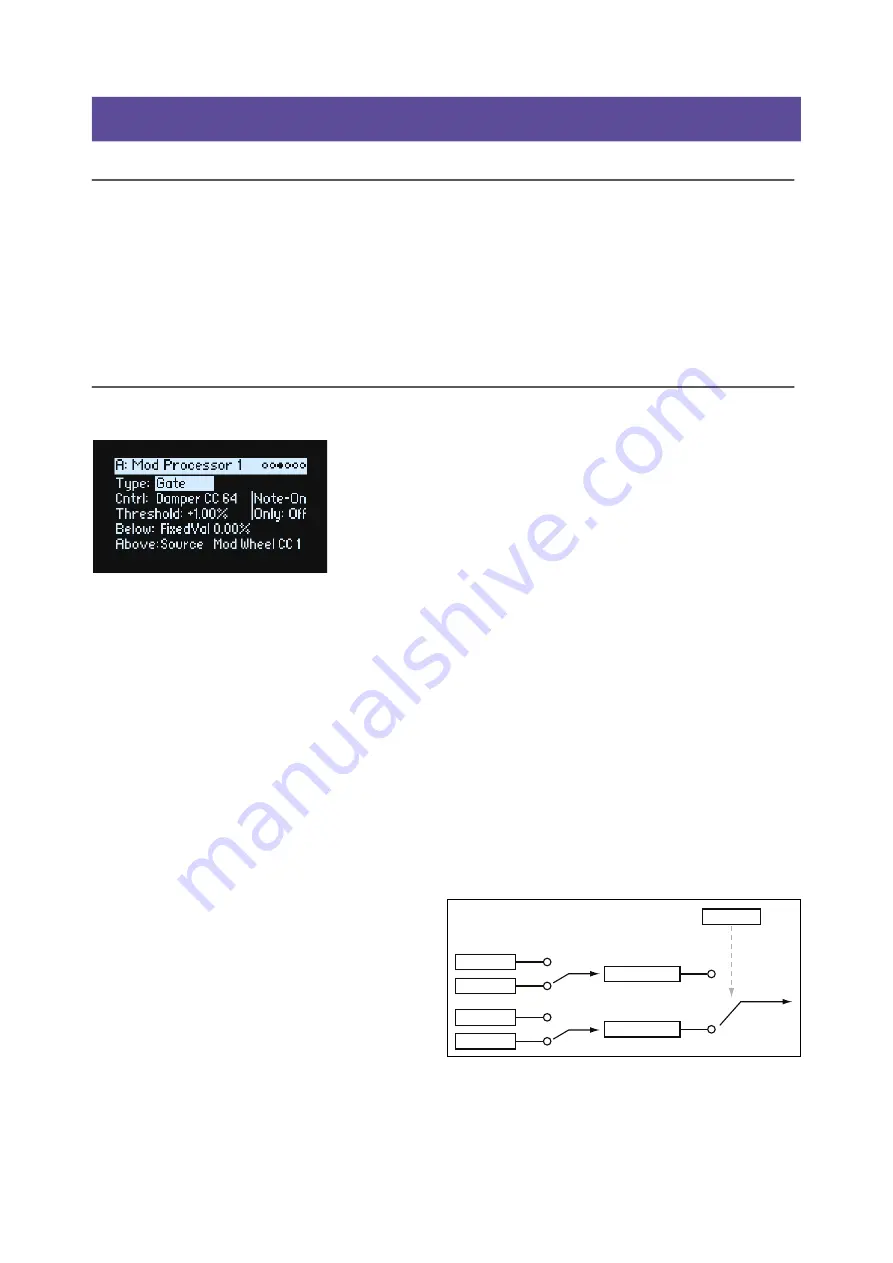
Modulation Processors
62
Modulation Processors
Overview
Modulation Processors transform a modulation signal to make it into something new. The original modulation signal
also remains available. There are two Modulation Processors per Program.
The Modulation Processor outputs appear in the list of modulation sources, just like the LFOs and Envelopes.
Type
[Gate, Offset, Quantize, Scale, Curve, Smooth, Sum ]
This controls the type of processing performed by the Mod Processor. Each is described in detail below.
Gate
This lets you switch between two modulation sources (or fixed values) using a third modulation source.
It’s similar to an audio gate with a side-chain, but with even more flexibility–since you get to choose what happens
when the gate is closed (below the threshold), as well as when it’s open (above the threshold).
For instance, you can use Gate to:
•
Apply pitch-bend or other effects to some notes, but not to others (using
Control at Note-On Only
)
•
Apply modulation only after the source reaches a certain threshold–for instance, use Velocity to modulate an
LFO’s frequency, but only once Velocity is greater than 90
•
Use a controller to switch between two different LFOs (or any two modulation sources)
Cntrl (Control Source)
[List of Modulation Sources]
This selects the modulation source to control the Gate.
Threshold
[-100…+100]
This sets the value of the Control Source at which the gate opens or closes.
Control at Note-On Only
[Off, On]
When this is
On
, the value of the Control Source is only
evaluated at note-on. The selected output will then
remain active throughout the duration of the note,
regardless of any subsequent change in the Control
Source’s value. Note that the output value itself can
continue to change; only the selection of Below or Above
is fixed.
Cntrl
Below
Above
Fixed Val
Source
Fixed Val
Source






























